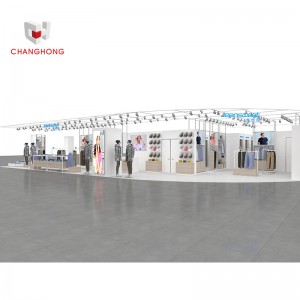Dec . 05, 2024 08:20 Back to list
Elevate Your Space with Stylish Floor Fixtures for Every Room
The Importance of Floor Fixtures in Modern Retail Design
In the fast-evolving world of retail, the significance of floor fixtures has become increasingly paramount. These fixtures, which encompass everything from shelving units and display racks to stands and mannequins, serve as the backbone of retail design. They not only showcase products but also influence customer behavior and shopping experience. Understanding the impact and the functionality of floor fixtures is essential for retailers aiming to create a compelling shopping environment.
Design and Aesthetics
One of the primary roles of floor fixtures is to enhance the aesthetics of a retail space. Well-designed fixtures can make products stand out and create a visually appealing environment. Retailers invest in floor fixtures that align with their brand image and appeal to their target demographics. For instance, a high-end boutique may opt for sleek, minimalist fixtures that exude luxury, while a children's store may choose vibrant, playful designs that attract both kids and parents.
The choice of materials used in floor fixtures also plays a crucial role in aesthetic appeal. Wood, metal, glass, and acrylic are commonly used materials, each contributing a unique look and feel to the retail space. The right combination of colors, textures, and designs can elevate a store's atmosphere, encouraging customers to linger and explore.
Functional Use and Product Display
Beyond aesthetics, floor fixtures serve a functional purpose in product display. They are designed to organize products efficiently, making it easy for customers to find what they're looking for. Effective use of space is critical in retail, especially in smaller shops where maximizing visibility is key. Floor fixtures can be customized to accommodate various products, whether it's clothing, electronics, or home goods.
Strategically placed fixtures can help guide the customer journey through the store. For example, end caps or free-standing display units can draw attention to seasonal items or special promotions, encouraging impulse purchases. The arrangement of fixtures can also facilitate a logical flow of traffic, leading customers from one section to another seamlessly.
Influencing Customer Behavior
The psychology of shopping indicates that store layout and design significantly impact consumer behavior. Floor fixtures can influence how long customers stay in a store and how much they spend. Studies show that well-placed displays can increase sales by as much as 20%.
floor fixture

Moreover, the height and accessibility of floor fixtures matter
. Higher shelves can showcase merchandise without cluttering the floor space, but they may alienate shorter customers or those with disabilities. Finding the right balance is crucial. Also, incorporating interactive elements within floor fixtures—such as touchscreens or product samples—can enhance customer engagement and boost sales.Seasonal and Flexible Displays
Retail is dynamic, with trends changing rapidly and seasons influencing consumer preferences. Floor fixtures must be adaptable to accommodate these changes. Seasonal displays are vital for retailers, allowing them to promote products relevant to specific times of the year, such as holiday-themed items or summer essentials.
Versatile floor fixtures can be easily reconfigured or updated, allowing retailers to keep their offerings fresh and exciting. Movable displays, modular shelving, and interchangeable signage enable a store to adapt quickly to emerging trends or inventory changes without significant investments in new fixtures.
Sustainability and Innovation
As consumer awareness around sustainability grows, many retailers are turning to eco-friendly materials and manufacturing processes for their floor fixtures. Using recycled materials, sustainable wood sources, or energy-efficient lighting for displays can appeal to environmentally conscious consumers and position a brand as responsible.
Furthermore, innovations in smart technology are beginning to influence floor fixture design. Some retailers experiment with technology-integrated displays that interact with customers' smartphones or provide real-time inventory updates. This level of interactivity not only enhances the shopping experience but also creates a bridge between the online and offline shopping worlds.
Conclusion
In conclusion, floor fixtures play a multi-faceted role in modern retail design. They are critical to creating an inviting atmosphere, organizing products, influencing customer behavior, and adapting to seasonal trends. By focusing on the design, functionality, and sustainability of floor fixtures, retailers can enhance the shopping experience and drive sales. In a competitive retail landscape, investing in effective floor fixtures is not just an option—it's a necessity for success.
-
The Benefits of Electronic Shelf Labels for Modern Stores
NewsJul.01,2025
-
Space-Saving Retail Store Furniture Designs for Small Shops
NewsJul.01,2025
-
Slatwall vs. Gridwall: Which Store Fixture is Right for Your Business?
NewsJul.01,2025
-
Shop Fittings: Essential Elements for a Functional Retail Space
NewsJul.01,2025
-
How to Design a Minimalist Cosmetic Shop Display
NewsJul.01,2025
-
Creative Clothes Shop Display Ideas to Attract More Customers
NewsJul.01,2025


















































































































